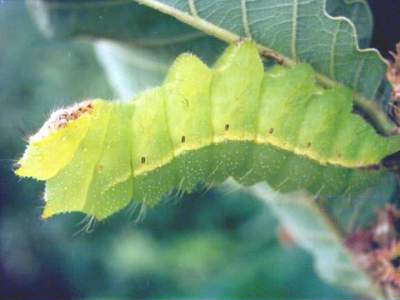|
1. Tussah
Tussah (a type of silkworm) raising is a traditional Dandong industry, with an annual output reaching more than 23,000 tons. Dandong’s output is first in China, accounting for 50 percent of the national total and 70 percent of the provincial total.
The main tussah breeds are the Qinghuang, Xinghuang, Yinbai, and Shuiqing. Breeds created in the lab include the Qingyi, Qingliu, Keqing, Sanheisi, Zuozao 1, and Zuoza 1-5.
Dandong has a more than 200 year history of tussah raising. It was introduced from Shandong province during the Qing Dynasty (1644-1911).
Dandong has 2.61 million mu (174,000 hectares) of silkworm farms and 30,000 rural people working in the business. There are 7 state-owned silk textile enterprises and 40 processers at the township level, employing 28,000 people and generating 400 million yuan in output value annually. Tussah silk is a key source of foreign exchange through exports.
The industry has a bright future thanks to modern biotechnological methods and the emergence of high-tech products. The high-grade tussah silk outerwear, underwear, knitted shirts, socks, spun silk carpets, silk floss quilts and handicraft silk, produced with modern technology are elegant, luxurious and comfortable and quite popular with Chinese and foreigners alike. A wild silkworm, silk peptide brand of cosmetics, developed with bioengineering technology, is selling well in Shanghai, Guangzhou, Hong Kong, Taiwan, and overseas.

|